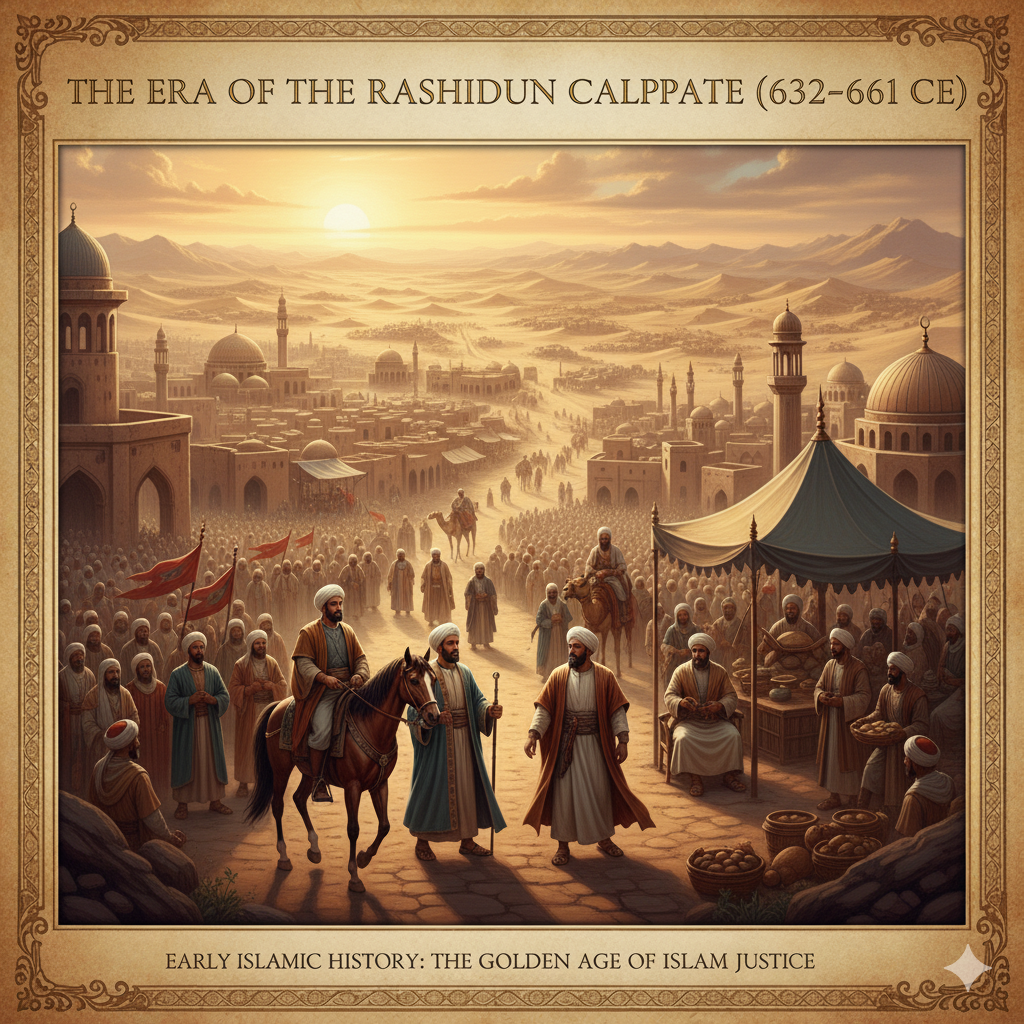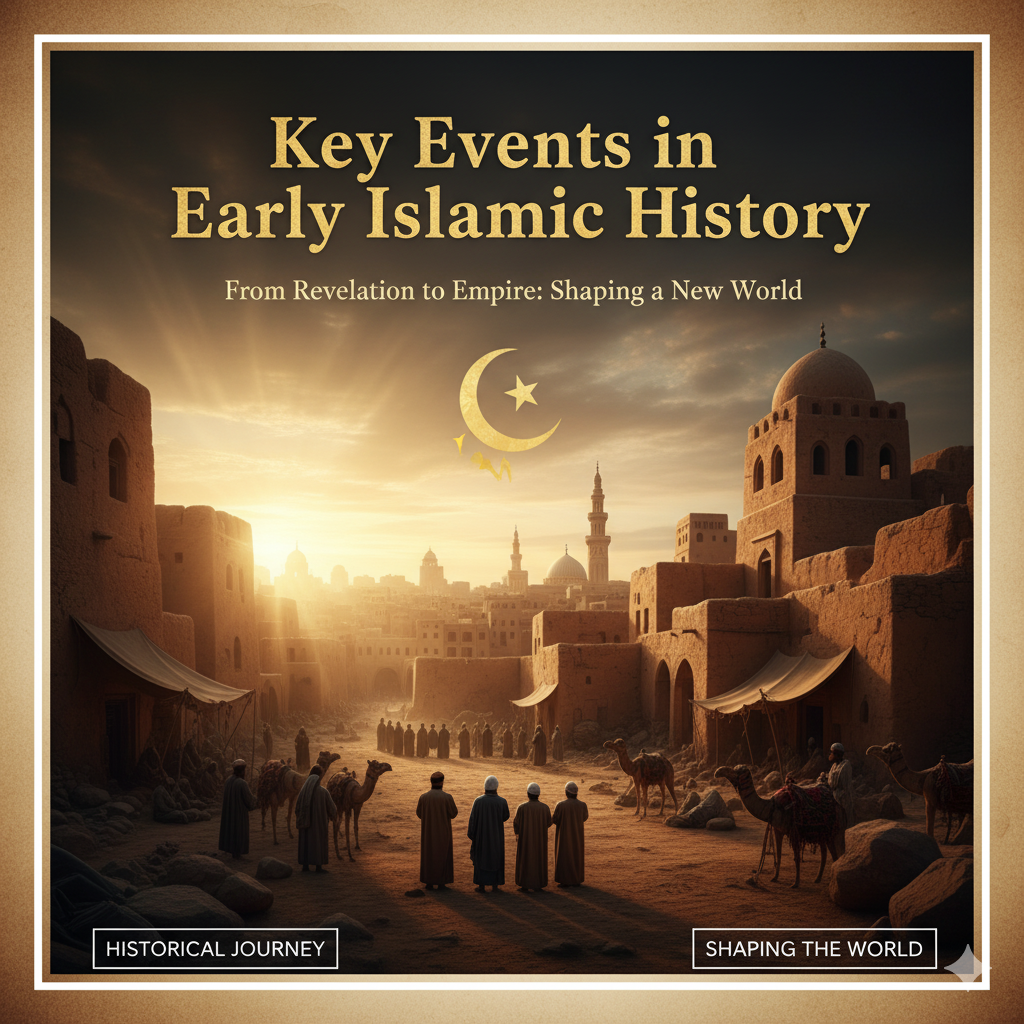The story of early Islamic history is not just a chronicle of a new faith; it’s a narrative of profound social, political, and cultural transformation that reshaped the world. From a humble beginning in the Arabian Peninsula, Islam emerged as a major global civilization, and understanding its origins is crucial to understanding our modern world. The foundational moments of this era are filled with drama, faith, and monumental change.
This journey back in time will explore the pivotal events that defined early Islamic history. These are not merely dates on a timeline but defining moments that forged an identity, established a community, and set the course for a civilization that would stretch from Spain to Indonesia. Whether you’re a student of history, curious about world religions, or simply seeking to understand the forces that shaped our past, this exploration of early Islamic history offers profound insights.
1. The First Revelation (c. 610 CE)
The genesis of Islam begins in a moment of quiet contemplation. Muhammad, a respected merchant from Mecca known for his integrity, often retreated to the Cave of Hira in the mountains outside the city to meditate. It was during one of these retreats, in the year 610 CE, that he received the first divine revelation. The Angel Gabriel (Jibril) appeared before him and commanded him to “Iqra!”—Read!
This was not just the beginning of the Quran, the holy book of Islam, but the foundational event of the faith itself. The words that flowed from this point forward, revealed over the next 23 years, would form the basis of Islamic theology, law, and spirituality. This singular, powerful event in a secluded cave marks the start of Prophet Muhammad’s mission and is the absolute bedrock of early Islamic history.
2. The Hijra: The Migration to Medina (622 CE)
For over a decade after the first revelation, the early Muslim community in Mecca faced relentless persecution. Their message of monotheism was a direct challenge to the polytheistic traditions and the powerful tribal establishment of the city. Faced with increasing hostility, the Prophet Muhammad and his followers made a critical decision: to migrate.
In 622 CE, they journeyed over 200 miles north to the city of Yathrib, which would soon become known as Medina, “the city of the Prophet.” This migration, or Hijra, was a monumental turning point. It marked the transition from a persecuted minority to a self-governing community. Here, the first mosque was built, and the principles of the faith were woven into the fabric of a functioning society. The significance of the Hijra is so central that the Islamic calendar begins from this year. It represents a new beginning and a practical model for the Islamic state.
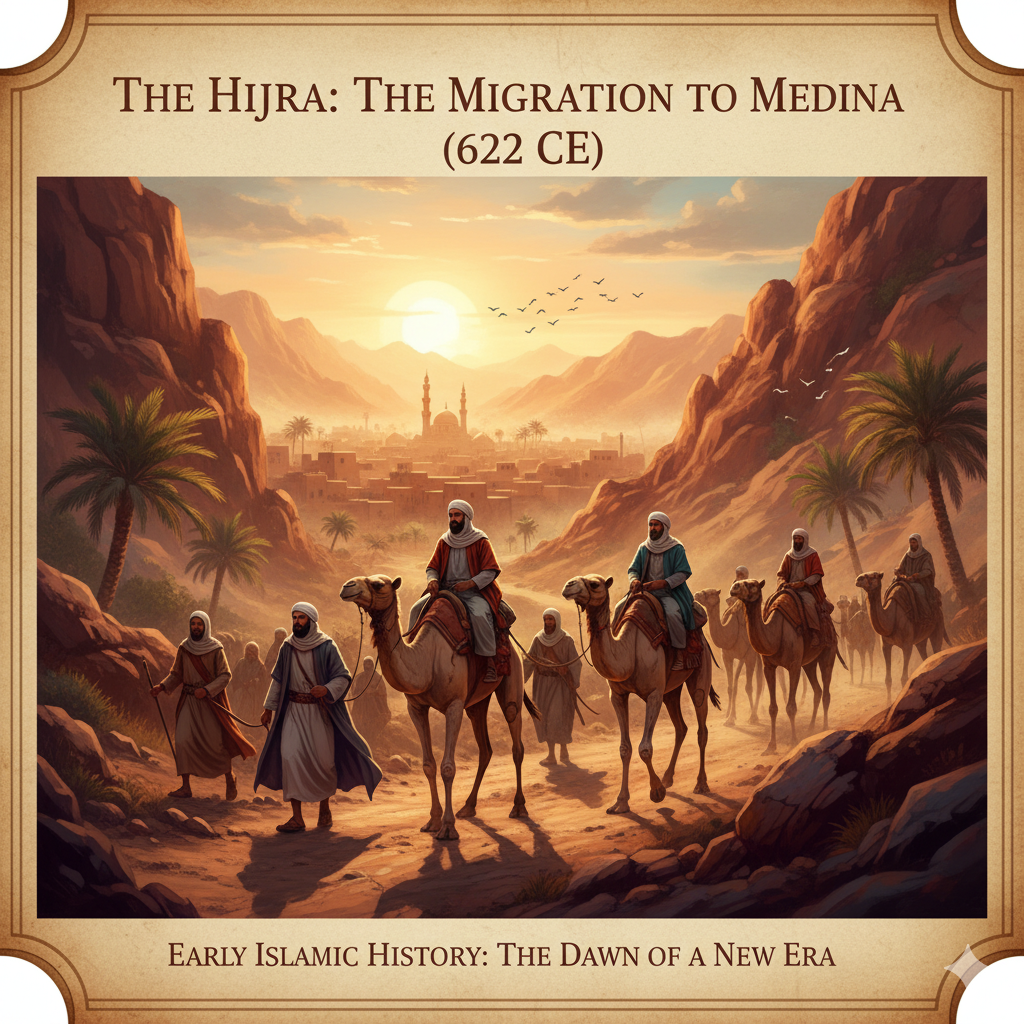
3. The Constitution of Medina (c. 622 CE)
Shortly after arriving in Medina, Prophet Muhammad established a remarkable document known as the Constitution of Medina. This charter was a groundbreaking social contract that formally established the rights and responsibilities of the various communities living in the oasis, including the migrating Muslims, the local Arab tribes, and the significant Jewish population.
It created a new form of community, an Ummah, based not on kinship but on shared faith and mutual defense. The constitution guaranteed religious freedom, established a system for administering justice, and outlined the defensive obligations of all signatories. In the landscape of early Islamic history, it stands out as a visionary blueprint for a pluralistic society, where different groups could coexist under a unified legal framework.
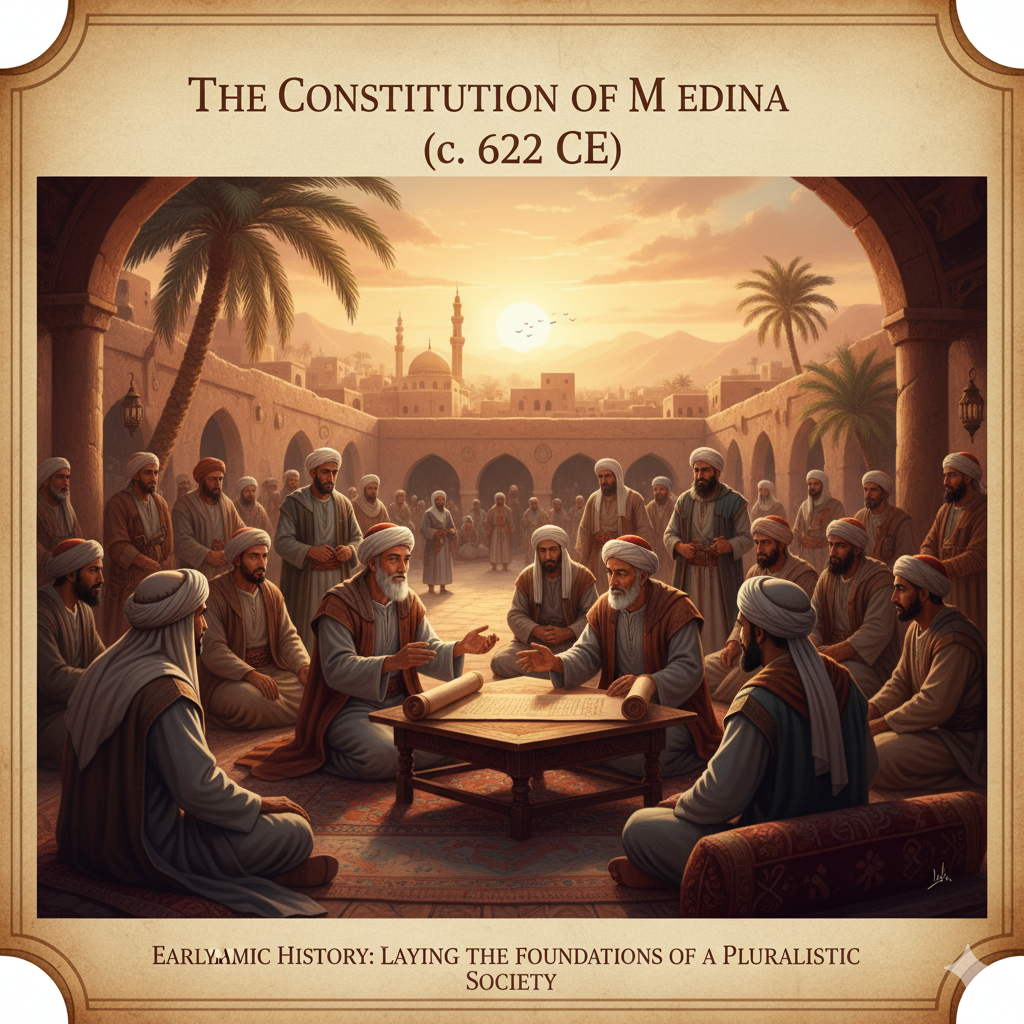
4. The Conquest of Mecca (630 CE)
Eight years after the Hijra, the balance of power in Arabia had shifted dramatically. The Muslim community in Medina had grown in strength and influence. In 630 CE, following a breach of a treaty by Meccan allies, Prophet Muhammad marched on his hometown with a force of 10,000 men.
What followed was not a bloody battle but a largely peaceful conquest. The leaders of Mecca, recognizing the strength of the Muslim forces, surrendered the city. Prophet Muhammad entered Mecca, declared a general amnesty for his former persecutors, and proceeded to the Kaaba—the ancient, cube-shaped structure at the heart of the city. He and his followers removed the 360 idols housed within it, rededicating the sacred site to the worship of the one God, as it was believed to have been built by Abraham and his son Ishmael. This event firmly established Islam as the dominant force in the Arabian Peninsula.
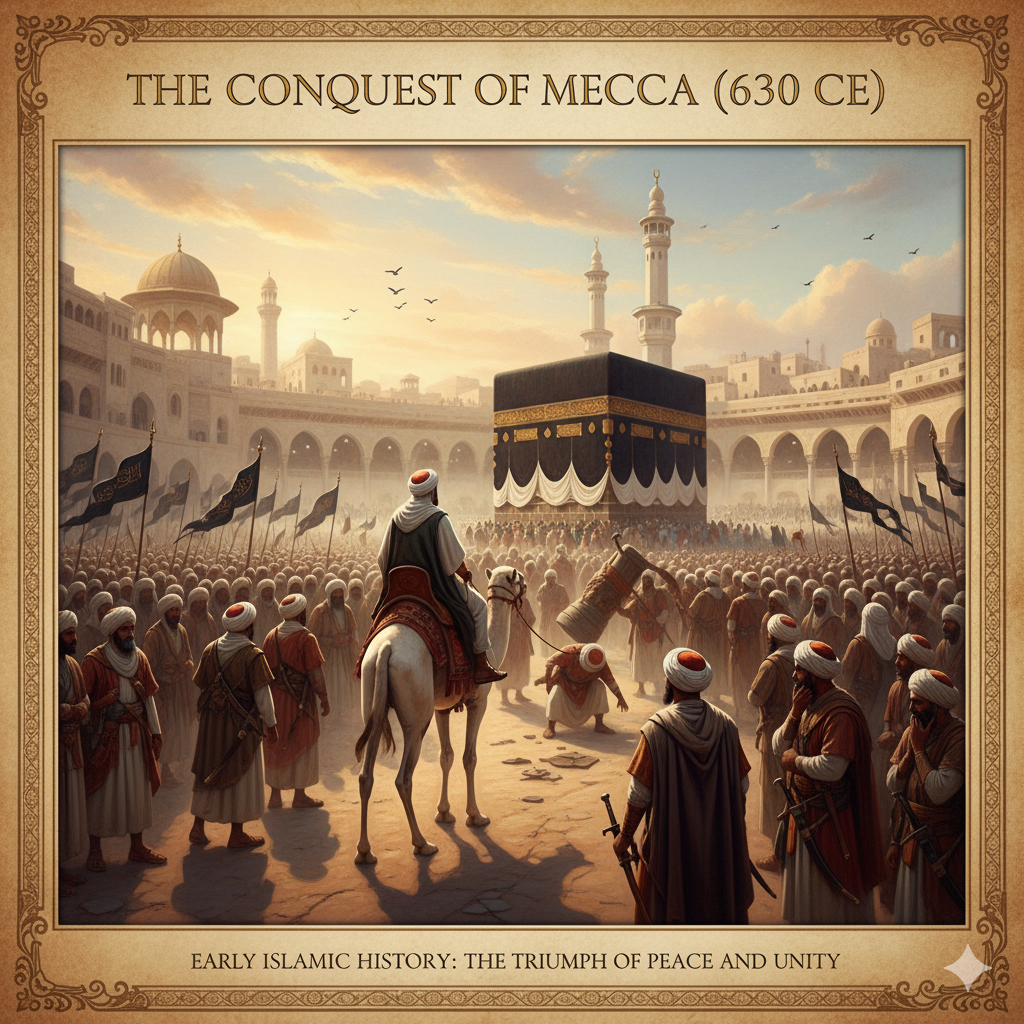
5. The Farewell Sermon (632 CE)
In the final year of his life, Prophet Muhammad delivered his last public sermon during the Hajj pilgrimage at Mount Arafat. This Farewell Sermon is a powerful and concise summary of the core tenets of Islam. He spoke of the sanctity of life and property, the importance of justice, and the equality of all believers regardless of race or social status. “An Arab has no superiority over a non-Arab, nor a non-Arab has any superiority over an Arab,” he declared, “A white person has no superiority over a black person, nor a black person has any superiority over a white person, except by piety and good action.”
He reminded his followers of their duties to one another, the rights of women, and the pillars of the faith. This sermon is cherished in Islamic tradition as the culmination of his prophetic mission, a final piece of guidance for his community.
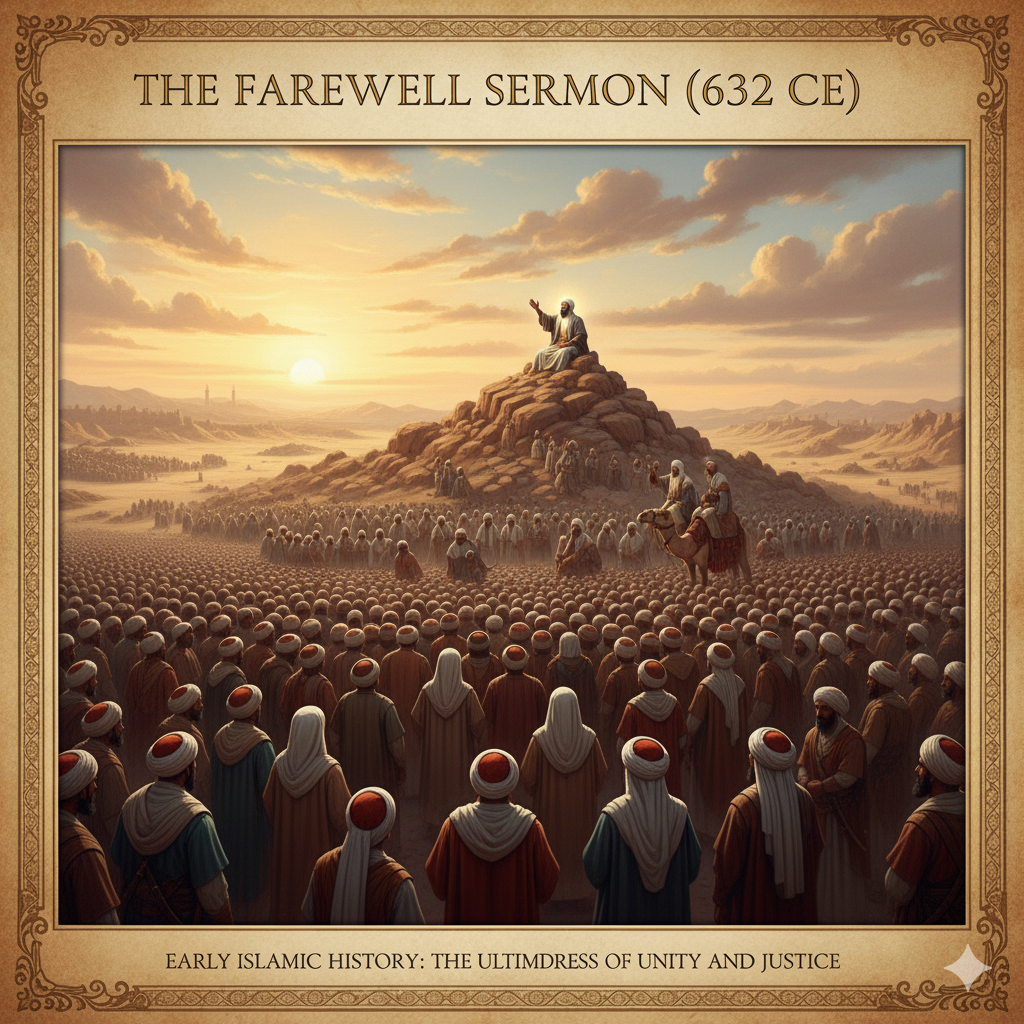
6. The Era of the Rashidun Caliphate (632–661 CE)
After the death of Prophet Muhammad in 632 CE, the Muslim community faced its first major crisis: leadership. This led to the establishment of the Caliphate, a system of political-religious succession. The first four caliphs—Abu Bakr, Umar, Uthman, and Ali—are known as the Rashidun, or the “Rightly Guided Caliphs,” by Sunni Muslims.
This period was one of the most formative in all of early Islamic history. Under the leadership of these four men, the nascent Islamic state expanded exponentially, conquering vast territories including Persia, Syria, and Egypt. It was during this era that the revelations of the Quran were formally compiled into a single written volume. However, this period was also marked by internal political turmoil and civil wars, known as the Fitna, which ultimately led to the schism between Sunni and Shia Islam—a division that continues to shape the Muslim world today.
